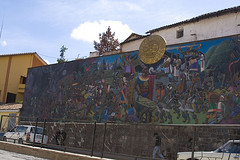Climb to Machu Picchu
Lima, June 15, 2011
As our Perú cross-cultural came to an end we got to visit and see places you only dream of seeing. We started off with a train ride to Machu Picchu. On our journey to Machu Picchu we had time to relax on the train, play games, and just enjoy each … Continue Reading ››






